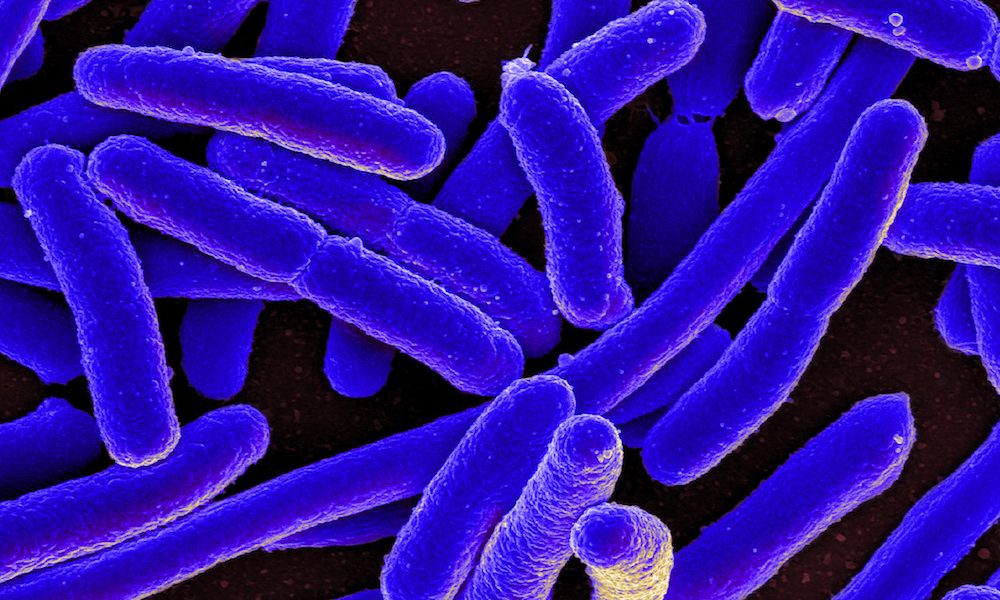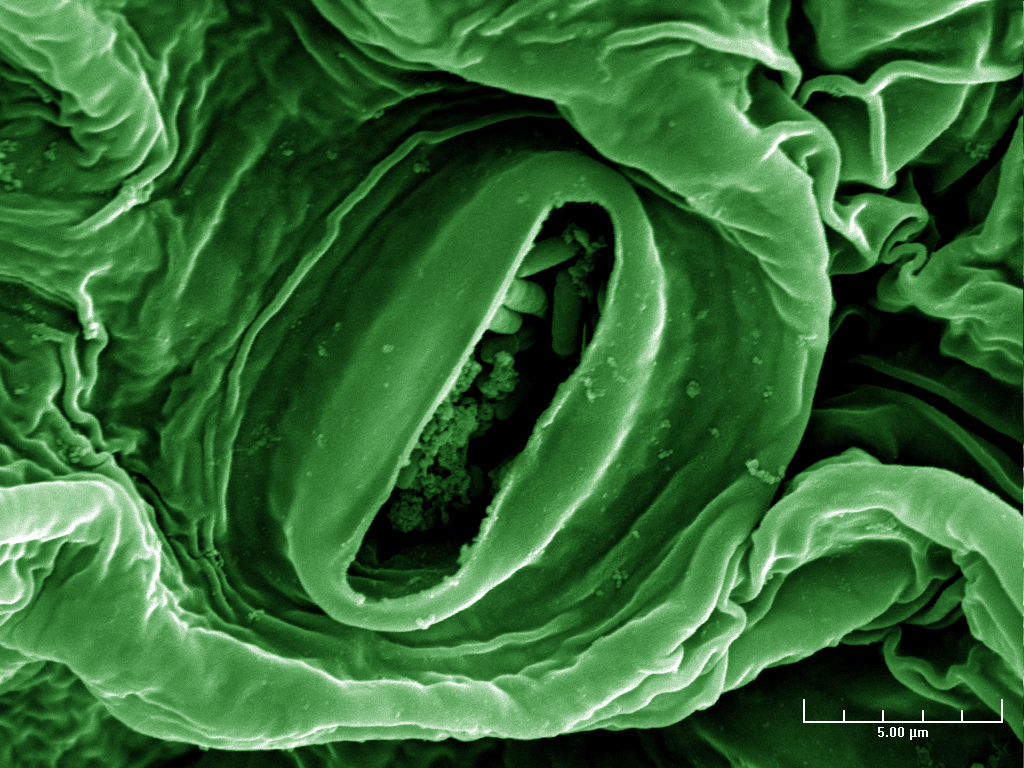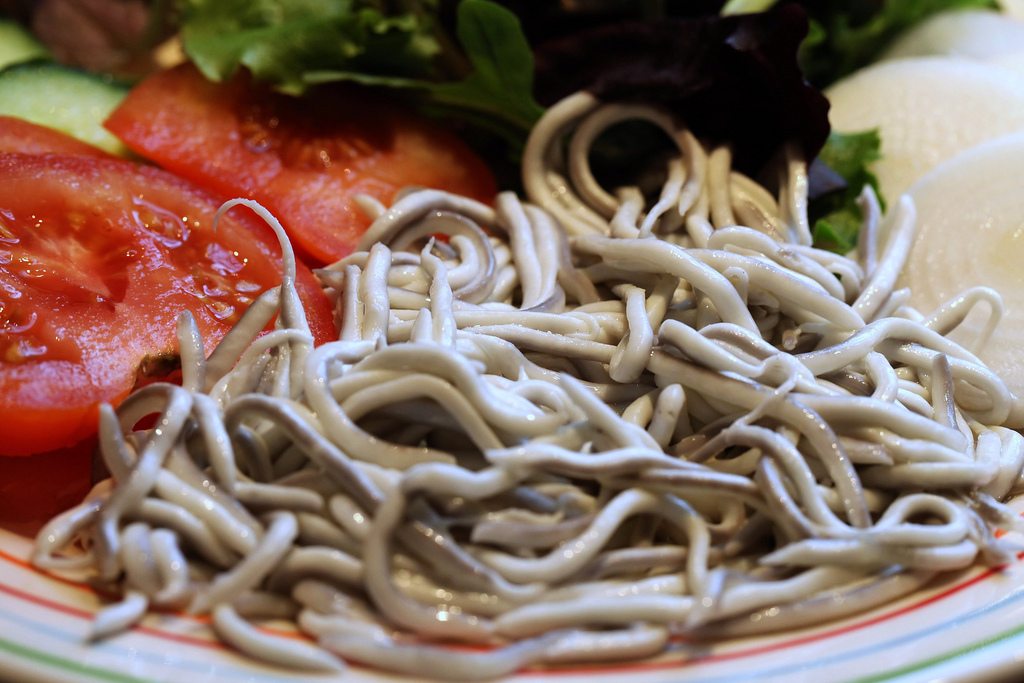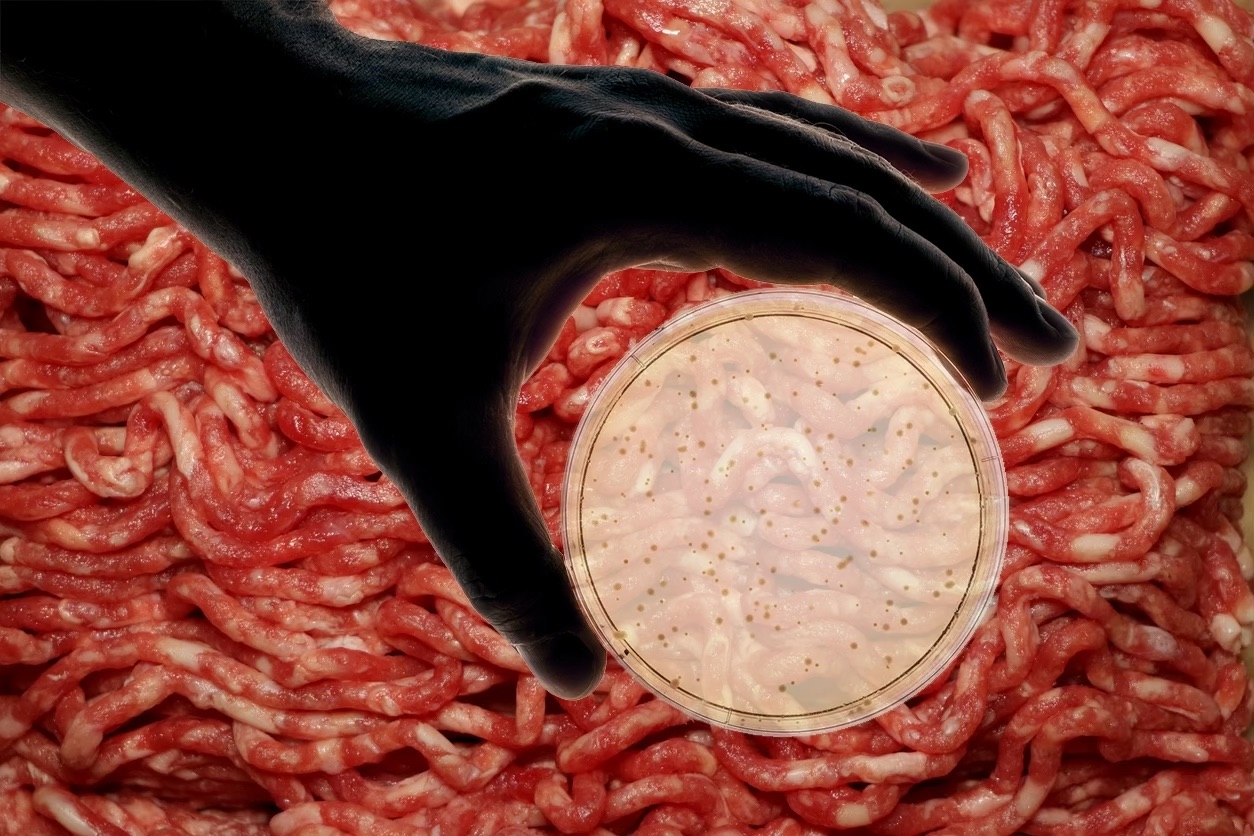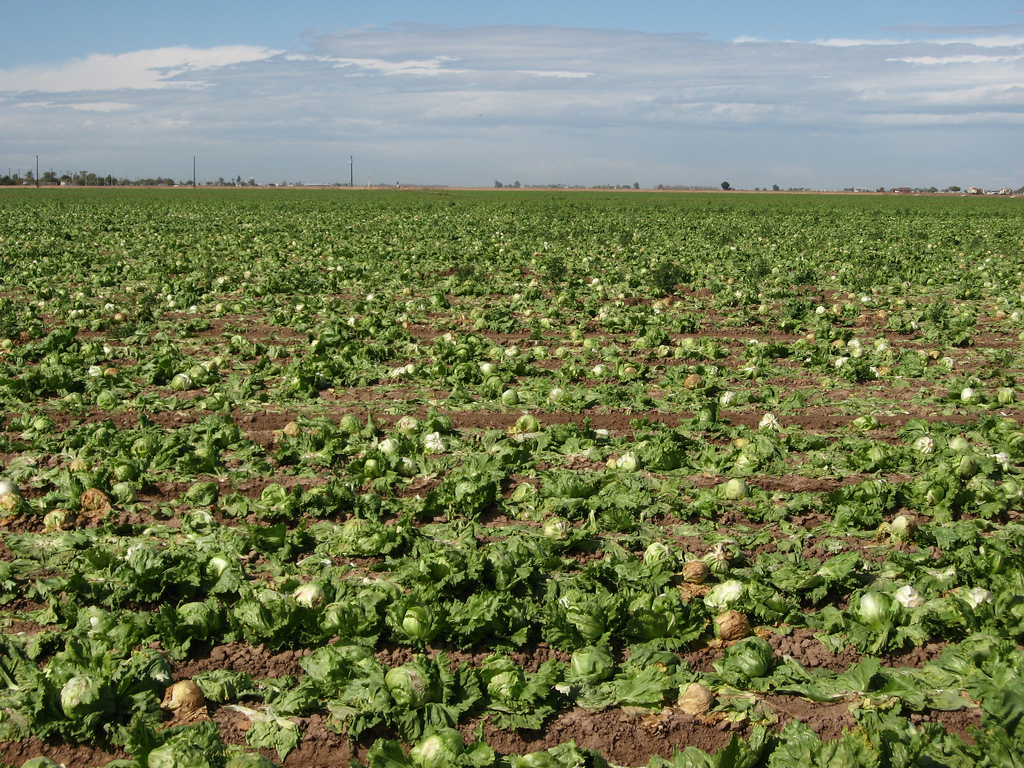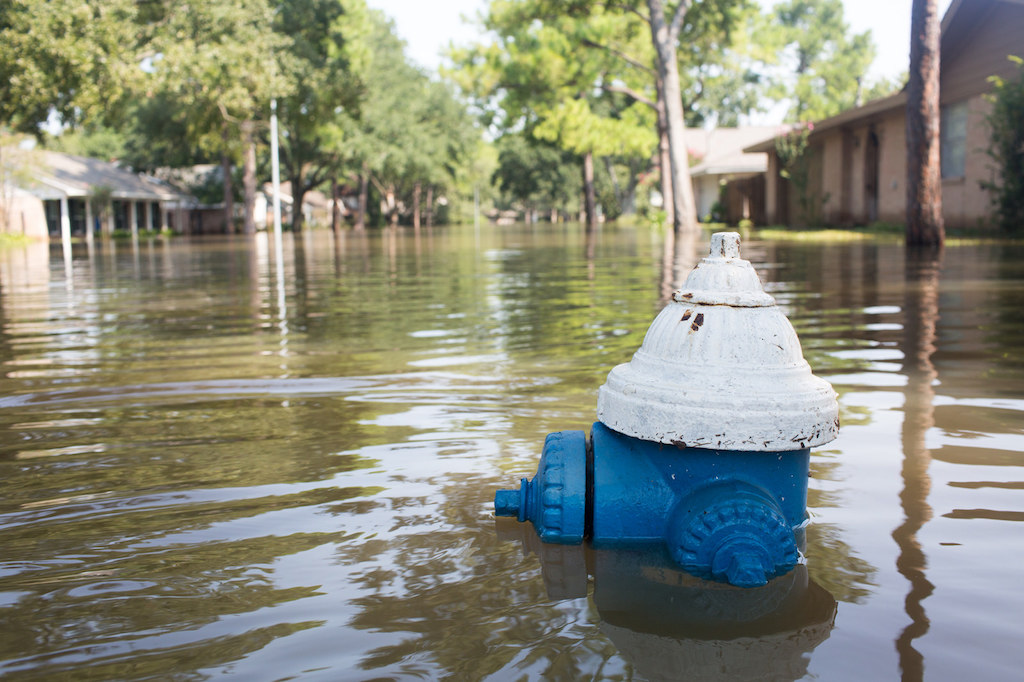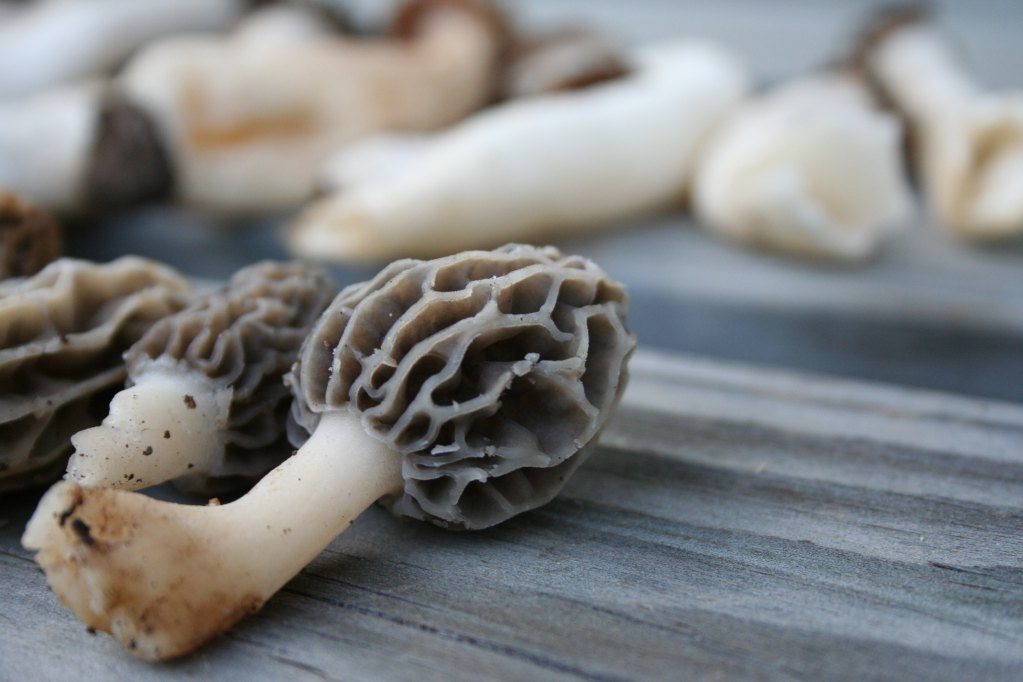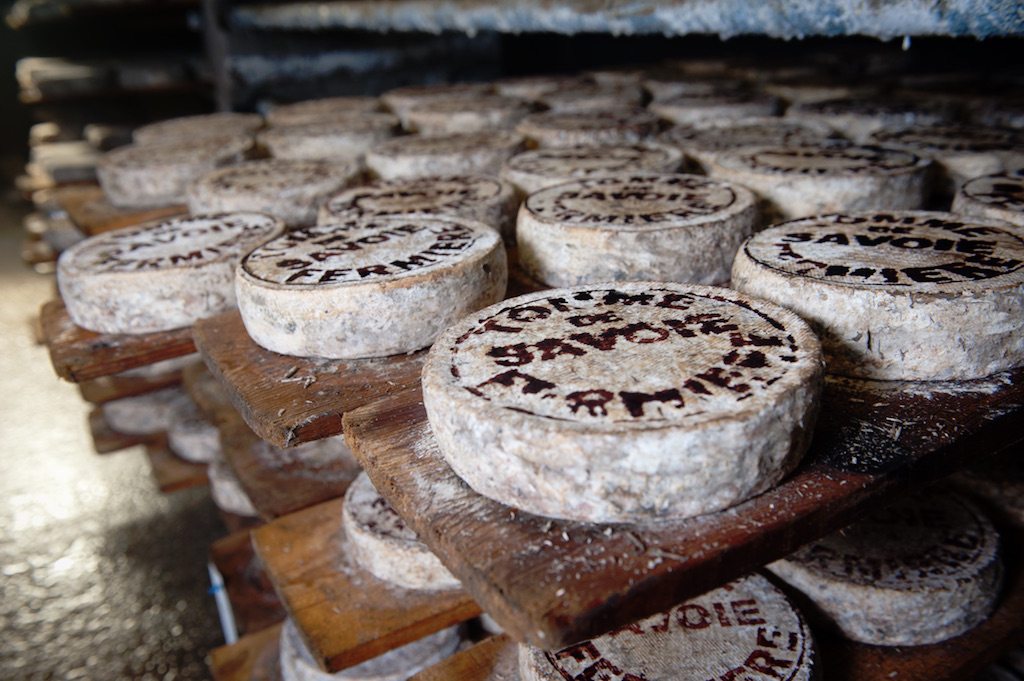Around Thanksgiving of 2015, it seemed impossible to watch the news without seeing reports of another E. coli outbreak. The infection tsunami started to gather momentum in early October, when illnesses resulting from the nasty foodborne bacteria were reported in several states, including Montana, Utah, and Colorado, by Costco customers who had eaten the store’s rotisserie chicken salad.
Later in October, public health officials in Washington and Oregon identified an initial outbreak of a rare E. coli strain in people who had fallen ill after eating at multiple Chipotle Mexican Grill locations. In December, a second, smaller outbreak of a different rare E. coli strain was identified in three Midwestern states.
According to the Centers for Disease Control and Prevention (CDC), a total of 79 people in 21 states got sick—and for every reported case, news outlets published more than fifty stories.
The guilty Chipotle ingredient was never identified. In February 2016, the Wall Street Journal published a story in which unidentified sources suggested the culprit may have been contaminated Australian beef. The same article said the CDC pointed fingers at the produce. Either way, the agency’s official determination was that the source was unknown.
Costco’s outbreak was traced back to the diced celery and onion blend in its rotisserie chicken salad, which was produced by Taylor Farms Pacific, Inc., a fresh-cut fruit and vegetable wholesaler headquartered in California.
The CDC declared Costco in the clear at the end of December, but Chipotle wasn’t cleared until February. Though the particular strain of E. coli that caused the Costco outbreak–Escherichia coli O157:H7–is potentially more life-threatening than the two strains that caused Chipotle’s, it took a much harder hit in the arena of public opinion: Chipotle’s stock prices dropped 33 percent, while Costco finished out the year with a 6.4 percent gain.
So how did Costco come out on top while Chipotle lost a third of its value? A report released today by Meltwater Group, a media intelligence company, analyzed 30 million tweets per day and news stories from over 200,000 news sources to inform its Summer 2016 Fast Food Industry Report. One portion of the report analyzes data from January 2015 through May 2016 to quantify the impact of media coverage on the Chipotle and Costco outbreaks.
“The reason social media monitoring adds an interesting texture to this is people do talk about this stuff all the time,” says Omid Mirshafiei, one of the report’s authors, who collaborated with Meltwater’s engineers and data science team on the project. “If people are going to bad-mouth a product… it’s going to be on social media. It’s not going to come up in an earnings column. It’s not going to come up on CDC’s official website.”
To wit: In early June, Eric Van Lustbader, who took over authorship of the Jason Bourne novel series after its creator died, tweeted that his editor was hospitalized after eating at a Chipotle in Manhattan, and the company’s stock dropped by as much as 3.7 percent (estimated at $300 million) in a single morning.
 When it comes to media coverage, not all outbreaks are created equal. To put the above chart in context: Chipotle, the brand, gets more news coverage than Costco, the brand, generally speaking—10 percent more coverage, according to the report. But the numbers look different when you consider outbreak stories as they relate to the total number of stories about the brand. For Chipotle, outbreak news generated 116 percent of total news compared to brand news in general (meaning you probably saw more outbreak porn than you saw free burrito promos, odd short films, and outrage over the carnitas shortage, combined). Costco’s chicken salad catastrophe, on the other hand, only made up about 40 percent of the brand’s total news coverage. So last year, you were probably reading about its discount organics program a lot more often than its E. coli scare.
When it comes to media coverage, not all outbreaks are created equal. To put the above chart in context: Chipotle, the brand, gets more news coverage than Costco, the brand, generally speaking—10 percent more coverage, according to the report. But the numbers look different when you consider outbreak stories as they relate to the total number of stories about the brand. For Chipotle, outbreak news generated 116 percent of total news compared to brand news in general (meaning you probably saw more outbreak porn than you saw free burrito promos, odd short films, and outrage over the carnitas shortage, combined). Costco’s chicken salad catastrophe, on the other hand, only made up about 40 percent of the brand’s total news coverage. So last year, you were probably reading about its discount organics program a lot more often than its E. coli scare.
When you look at the raw infection numbers, there’s a case to be made that Costco’s outbreak was as bad or maybe worse than Chipotle’s. It covered a comparable amount of territory, and its bacterial strain was potentially more life-threatening. But while E. coli didn’t keep Costco from reporting net positive earnings in 2015, Chipotle’s stock fell dramatically. Some of that can undoubtedly be attributed to Costco’s diversified offerings—no one’s worried about getting E. coli from bottles of shampoo. But nevertheless, it’s hard to deny that Chipotle took a harder hit. Here are some reasons why that may be.

People love a fallen angel. “When either a celebrity or a politician who has worked hard to cultivate a certain image is all of a sudden caught, hand in the cookie jar, doing something totally contrary to that, that’s when media and social media people love to rake that person or firm over the coals,” Miershafiei says. Chipotle’s superfresh, often self-congratulatory image sometimes irked journalists and eaters alike, and the outbreaks arrived just after the chain dropped a beloved protein from its menus—the carnitas—which also set off a wave of bad press.
“The image they work hard to cultivate is about: Hey, we’re responsibly sourced and we’re really fresh and we’re better than all that other dirty fast food. So that image being built up, the contrast with the outbreak finally hitting is profound,” says Mirshafiei.
Aside from its image, Chipotle has something else: Cultural icon status. It’s a brand that people interact with every day, and people have emotional attachments to its signature products. Costco, on the other hand, has built its brand on bulk and discounts. Besides, when’s the last time anyone said, “I’m craving Costco”?

Chipotle was also responsible for norovirus outbreaks between October and December 2015. The numbers above include those cases
Size matters. Unlike Costco, Chipotle sickened hundreds of people over the course of multiple incidents. In addition to Chipotle’s two E. coli outbreaks, the company also battled a December norovirus outbreak at one Boston restaurant that sickened an additional 143 people. The timing was terrible, and social media isn’t necessarily the place to hash out the nuances of foodborne illness outbreaks—by that time, the public pretty much had outbreak fatigue.
 No closure—except of Chipotle stores. Costco’s outbreaks were pronounced contained at the end of December 2015, but the CDC didn’t clear Chipotle until February 2016. And the Costco source was quickly identified (vegetables from Taylor Farms), while Chipotle’s carrier remains at large. “CDC cleared Chipotle, but they still said, ‘Hey we really don’t know what happened, but we think it’s okay now.’ And even after those coupons—what, five million were downloaded?—they gave away their product for free, and it still didn’t really start to come back until April if you look at that bar graph,” says Mirshafiei.
No closure—except of Chipotle stores. Costco’s outbreaks were pronounced contained at the end of December 2015, but the CDC didn’t clear Chipotle until February 2016. And the Costco source was quickly identified (vegetables from Taylor Farms), while Chipotle’s carrier remains at large. “CDC cleared Chipotle, but they still said, ‘Hey we really don’t know what happened, but we think it’s okay now.’ And even after those coupons—what, five million were downloaded?—they gave away their product for free, and it still didn’t really start to come back until April if you look at that bar graph,” says Mirshafiei.
Omid Mirshafiei says any reports the CDC and Chipotle release to the public—quarterly earnings or outbreak data, for instance—give us only hard numbers. That’s fine for financial analysts or public health officials. But social media metrics take the temperature of public sentiment. They provide the human element that metrics from companies and government agencies can’t. Without social media metrics, says Mirshafiei, “we don’t know what the conversation is in the office. Are people are still saying, ‘Hey, you want to grab some Chipotle?’”
All graphics reproduced with permission from the Meltwater report.
